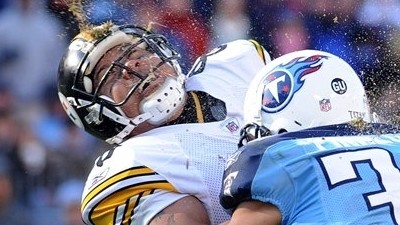Thoughts on the golf swing
August 18, 2015- by Steven E. Greer, MD
I thought that Tiger Woods, in his prime, was playing the best golf that a human could possibly play. Read more »
August 18, 2015- by Steven E. Greer, MD
I thought that Tiger Woods, in his prime, was playing the best golf that a human could possibly play. Read more »
July 9, 2015- CNN’s fame-seeking Dr. Gupta has been caught exaggerating his “life-saving” surgical exploits. Like fellow TV-doctors, such as Dr. Oz and Dr. Snyderman, this TV doctor gave up medical ethics long ago in order to be sensational and famous. Read more »
Update January 13, 2015- Yet another study was published highlighting the risks of daily aspirin. Read more »
Update January 29, 2014- Apple posted Q4 earnings so big that they are incomprehensible. Read more »
 Update January 20, 2015- The PBS news show Frontline has been tracking the number of head injuries in the NFL. The new rules changes that try to eliminate head to head tackling seem to be working. Concussions are Read more »
Update January 20, 2015- The PBS news show Frontline has been tracking the number of head injuries in the NFL. The new rules changes that try to eliminate head to head tackling seem to be working. Concussions are Read more »
Thromboembolic stroke caused by atrial fibrillation is the primary reason patients are placed on anticoagulation. However, those blood thinners also carry significant bleeding risks. As a result, various mechanical surgical approaches have been tried to prevent stroke, and obviate the blood thinners.
The newly approved Boston Scientific Watchman left atrial appendage occlusion device aims to prevent clots from forming and migrating to the brain. We interviewed Dr. William O’Neill of Henry Ford Hospital, a leading interventional cardiologist, about the Watchman, and whether it will truly allow patients with A-fib to stop warfarin or other blood thinners.
Interviewed by Steven E. Greer, MD
Medtronic granted rare access to a team led my Yale’s Harlan Krumholz and turned over the complete datasets on 17 InFuse (BMP-2) clinical trials. The goal was to determine whether adverse events being reported in real world usage were significant trends requiring new label warnings. Yale contracted Oregon Health and Sciences University to conduct one of the meta-analysis. We interviewed the lead author, Rongwei Fu, PhD.
Dr. Fu explains her findings. BMP-2 showed no efficacy advantage over other methods to fusing the spine, while also showing increased adverse event rates. In the cervical spine, their group concluded that BMP-2 was contraindicated.
The CREST trial, published earlier this year, was the latest large-scale, randomized, controlled trial to test the safety and efficacy of carotid artery stenting versus standard open CEA surgery. Divisions of the HHS and medical societies might next make changes to reimbursement and clinical guidelines based on the trial. The PI and lead author, Thomas Brott of the Mayo Clinic in Florida, discussed the paper. Topics discussed include:
Two important government-funded clinical trials on vertobroplasty were published today in The New England Journal of Medicine. Both trials showed that the practice of injecting cement into spinal compression fractures of the elderly do not help alleviate pain and disability better than control sham procedures. However, as with most spine trials, there is plenty of room to dice the data and find flaws in the conclusions.
The relevance to investors is that vertebroplasty is the direct competitor to Medtronic’s Kyphon balloon kyphoplasty device. On one hand, the two negative studies in the NEJM could cast doubt of the concept of repairing fractured osteoporotic spines, and be a negative for MDT as well. On the other hand, there is a good argument that kyphoplasty is significantly different from vertebroplasty and that the negative studies will drive more cases to be preformed using kyphoplasty.
We interviewed the principle investigator of the US trial, Dr. David Kallmes of the Mayo Clinic.
Interviewed by Steven Greer, MD
W. Dalton Dietrich, Ph.D., Scientific Director of the Miami Project to Cure Paralysis discusses two therapies to treat acute spinal cord injury (SCI). First, he discusses the trial recently allowed to proceed by the FDA, funded by company Geron, to use stem cells to treat SCI. It will be the first human trial of its kind in the U.S. In the second part of the interview, he discusses the pioneering work from Miami that uses hypothermia to treat acute SCI.